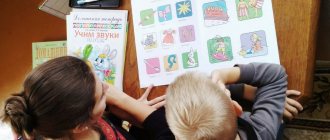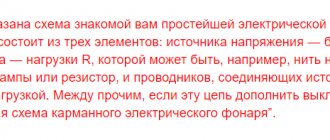An example of speech cards for students with severe speech impairments
3.1.
The structure of the articulatory apparatus
without any features
3.2.
Motor functions of the articulation apparatus,
erased form of dysarthria
3.3.
Speech breathing and voice formation
There are no disturbances in the rhythm of speech breathing and voice formation
4. Prosodic design of speech Speech rate is slow; makes accent errors; speech is intonationally inexpressive; makes errors in intonation division/integration of speech; the understanding of logical stress is impaired, the ability to reproduce intonation structures of various types is impaired; no speech rhythm disturbances
5. Motor development
5.1. Development of basic motor skills and coordination area motor clumsiness, clumsiness, fine manual motor skills defects
5.2. Formation of purposeful movements (praxis), poor coordination of movements, hypertonicity of the hands
6. Psychological basis of speech
6.1. Verbal memory: memory volume does not correspond to age norm: difficulties in reproducing information presented in verbal form
6.2. Speech attention is not formed, significant difficulties in concentrating/distributing attention when working with verbal material
6.3. Thinking (verbal and non-verbal intelligence) does not correspond to the age norm: significant difficulties in establishing logical connections between linguistic units; difficulties in understanding/producing logical-grammatical structures
7. Additional information
7.1.Features of early speech development : humming - 2.5 months, babbling - 5.5, first words by 1 year, first phrases - 2.5 years, phrasal speech - 3 years 3 months (according to mother)
7.2. Features of the speech environment in which a child is raised in a complete, prosperous family
7.3. Features of speech behavior are adequate, speech activity
7.4. Neurological status and state of sensory-perceptual organs and systems (vision, hearing, touch, etc.) the ophthalmologist is healthy; ENT – healthy, hearing normal; neurologist – delay in speech development
7.5. Information about current and past diseases of acute respiratory viral infections, otitis media, nasopharyngitis, obstructive bronchitis, conjunctivitis
Speech therapy report for a child with severe speech impairment (level II speech underdevelopment)
RECOMMENDATIONS classes with a speech therapist and educational psychologist
Teacher speech therapist____________________________________________________ /_________________/
Educational institution GBOU School No. 0000
SPEECH CARD
Filling date “00” _____________ 20_____
Last name, first name of the child Ivanov Ivan Ivanovich
……Date of birth
00.00.0000
Parents (legal representatives) _____________________________________________________
1. The child’s general ideas about the world around him
are significantly below the age norm, impoverished ideas about the world around him
Speech map material on speech therapy on the topic
Speech card (sample filling for a child with functional disabilities)
- Last name, first name, age:
ProkazovIlya, 7 years old
2. School class ____1_____
3. Home address: Fruktovaya street -67
4. Date of enrollment at the speech therapy center 09/18
5. Academic performance (at the time of the examination) Beginning of the school year.
6. Complaints from teachers and parents: According to the teacher: he pronounces several sounds incorrectly. According to the mother: the mother does not note incorrectly pronounced sounds.
7. A psychiatrist’s conclusion: not required for a child with FFN.
8. Hearing status: data from the medical record is reproduced; checked if necessary.
9. Data on the progress of speech development: According to the mother: words - from 1 year (1.5 years): phrasal speech - from 1.5-2 years.
10. Condition of the articulatory apparatus: The structure and mobility of the articulatory apparatus without pathology.
11. General characteristics of speech: My mother Nadezhda Ivanovna. Works as a nurse in a clinic. My dad's name is Ivan Petrovich, he works as an engineer. I'll tell you about summer. I was at the dacha in the summer. In the summer I helped my grandfather build a well. I helped my grandmother in the garden at the dacha. And then I cleaned the house and fed the dog. I was swinging on a swing with my sister. The path leads to the swing. Roses grow there. Then Malyu and I went to the city (mixes and replaces sounds; r-l, zh-z, s-t).
a) Vocabulary (quantitative and qualitative characteristics). Quantitative characteristics: the total volume of the vocabulary corresponds to age. Vocabulary within the age norm.
b) Grammatical structure. Within the age norm.
c) Pronunciation and distinction of sounds:
1) pronunciation of sounds: absence, distortion, replacement and confusion of individual sounds, r - throat, r-l, s-t, z-t (zhanozha - zhanoza, shasha-shasa, lalek-ralek);
2) distinguishing oppositional sounds: ra-la-la (laZ) ta-da-ta + ka-ka-ga + sa-sa-sha (shaZ) la-ra-la (laZ) yes - yes - ta + ga- ga-ka + sha - sha-sa (shaZ) sa-sa-za (sa-xia-xia) pa-pa-ba + za-zha-za (za-za-zha) za-za-sa (zya- xia-xia) ba-pa-ba + zha-zha-za (zhaZ); Errors in sound reproduction.
3) reproduction of words with different sound-syllable composition; give examples: motorcyclist - motorcycle, tablecloth - roll, bicycle - sped.
12. Level of development of skills in analysis and synthesis of the sound composition of a word:
Vata - what is the 1st star? - V; 2nd? - A; 3rd? - T; 4th?— a.
Drying - name the 1st star. - With. 3rd star - With.
Cloak - name the 2nd star? - ah, the last one - ?
Book - how many syllables? - 2; name the 1st syllable - kii; 2nd - ? - ha.
How many sounds are there in the 1st syllable? - 2; call them - k, n.
Makes mistakes when analyzing and synthesizing the sound composition of a word.
13. Writing: reproduces only individual printed letters.
14. Reading:
a) level of mastery of reading technique6
-reads syllables (AP, TA...), one-syllable words like “cat” and two-syllable words like “cotton wool”;
- errors when reading: omission and replacement of letters when reading.
c) reading comprehension: does not always understand the text read by the speech therapist.
16. Brief description of the child, based on pedagogical observations, unstable attention, critical of his defect.
17. Speech therapist’s conclusion: Phonetic-phonemic speech disorder.
Speech card for a school teacher - speech therapist
Speech card
(to be completed for each student enrolled in a speech therapy center)
- Last name, first name, age.
______________________________________________________________
2.Class.
______________________________________________________________
3.Home address, phone number.
______________________________________________________________
4.Date of enrollment in the speech therapy center.
______________________________________________________________
5.Achievement in native language (at the time of examination).
______________________________________________________________
6. Complaints from teachers or parents (legal representatives).
_______________________________________________________________
7. Conclusion of a psychiatrist.
_______________________________________________________________
8. Hearing condition.
_______________________________________________________________
9. Data on the progress of speech development. Anamnesis of general and speech development.
_____________________________________________________________________________________________________________________________________________________________________________________________________________________________________________________________________
10. State of the articulatory apparatus (structure and mobility)
___________________________________________________________________________________________________________________________________________________________________________________________________________________________________________________________________________________________________________________________________________________________________________________________________________________________________________________
11. General characteristics of speech (recording of a conversation, independent coherent statements):
_________________________________________________________________________________________________________________________________________________________________________________________________________________________________________________________________________________________________________________________________________________________________________________________________________________________________________________________________________________________________________________________________________________________________________________________________________________________________
a) vocabulary: vocabulary within everyday life, wider, etc.; what parts of speech he mainly uses; errors in the use of words: substitutions in meaning and acoustic similarity (give examples);
________________________________________________________________________________________________________________________________________________________________________________________________________________________________________________________________________________________________________________________________________________________________________________________________
b) grammatical structure: types of sentences used, the presence of agrammatisms (give examples);
________________________________________________________________________________________________________________________________________________________________________________________________________________________________________________________________________________________________________________________________________________________________________________________________
c) pronunciation and discrimination of sounds: pronunciation of sounds; absence, distortion, replacement and confusion of individual sounds; distinguishing appositional sounds; reproduction of words with different sound-syllable composition (give examples); pace and intelligibility of speech.
________________________________________________________________________________________________________________________________________________________________________________________________________________________________________________________________
12. Level of development of skills in analysis and synthesis of the sound composition of a word.
____________________________________________________________________________________________________________________________________________________________________________________________________________________________________________________________________________________________________________________________________________________________
13.Writing: the presence and nature of specific errors (Mixing and substitution of consonants, agrammatisms, etc.) in students’ written works - dictations, presentations, essays performed by them during the initial examination and in classes at the speech therapy center (written works are attached to speech map).
_____________________________________________________________________________________________________________________________________________________________________________________________________________________________________________________________________
14. Reading: level of mastery of reading techniques (letter by letter, syllabic, words); reading errors; reading comprehension.
_______________________________________________________________________________________________________________________________________________________________________________________________________________________________________
15. Manifestation of stuttering: a) supposed cause; severity of stuttering; situations that aggravate its manifestation (answers at the board); b) the formation of linguistic means (pronunciation, vocabulary, grammatical structure); c) features of general and speech behavior (organization, sociability, isolation, impulsiveness); d) adaptation to communication conditions.
__________________________________________________________________________________________________________________________________________________________
16. Brief description of the child according to the psychologist and teacher (organization, independence, stability of attention, efficiency, observation, attitude towards the existing speech impairment).
_________________________________________________________________________________________________________________________________________________________________________________________________________________________________________________________________________________________________________________________________________________________________________________________________
17. Conclusion of a speech therapist.
_____________________________________________________________________________________________________________________________________________________________________________________________________________________________________________________________________
18. The results of speech correction (are noted on the card at the time the student is expelled from the speech therapy center).
_________________________________________________________________________________________________________________
Features of the articulatory apparatus:
| "Smile" | "Tube" | "Fence" | "Swing" | "Spatula" | "Cup" | "Watch" |
Teeth _____________________________________ Bite ______________________________
Sky _____________________________________ Lips ________________________________
Tongue _____________________________________ Hyoid ligament __________________
Mobility ___________________________________________________________________
State of fine and gross motor skills _____________________________________________
______________________________________________________________________________
______________________________________________________________________________
______________________________________________________________________________





